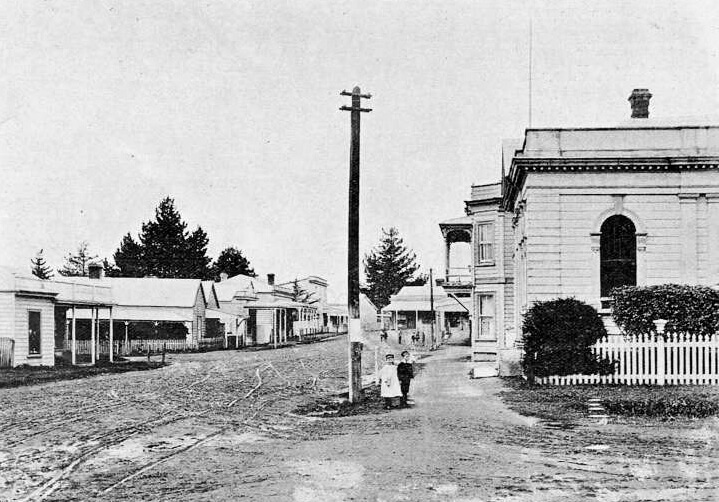Gathering bean sticks for the runner beans in the family vegetable garden was the afternoon’s occupation for a few lads near the Te Awamutu railway station in December 1901.
To get to the sticks 10-year-old Roy Howatson and his mates had crossed the railway bridge over the Mangapiko River. On re-crossing the bridge Roy suddenly fell through the sleepers into the river, a distance of about five metres. None of the boys could swim, and an older boy named Davis ran for help.

On the road from the railway station, Te Awamutu, 1899
Roy’s father, Andrew Howatson, a railway engineer, happened to be at home, and along with some other railway employees rushed to the spot. Roy was soon removed from the water and the Silvester method of restoring natural breathing was applied but without success. Dr Pairman arrived on the scene, and when he established that Roy had been in the river fully 10 minutes he had little hope for the boy, medical advice maintaining that four minutes’ total immersion was fatal.
This tragedy came four years after another calamity had hit the Howatson family.
Andrew had been 16 years in the railway service, starting work in Invercargill and then moving to Dunedin. He had been driving trains since 1890 and from Port Chalmers he was transferred to Auckland.
In 1886 he had married Mary Smith and they had four children. His work saw the family shift around the country and by 1897 he was stationed in Auckland. He had only been driving the Onehunga train a few days when a Ponsonby omnibus suddenly shot across the railway line and was hit by Andrew’s train. Several people were injured and three killed. Andrew was found to be not at fault and was quietly transferred to a Rotorua ballast engine, no doubt suffering greatly from the trauma of the accident.
Around 1900 the Howatsons moved to Te Awamutu, Andrew still working for the railway and Mary involved in the Band of Hope, an organisation which encouraged young people to sign a pledge to abstain from alcohol. The couple was also active in community events, Mary entering flower shows and baking competitions and Andrew joining local committees.
The inquest on their son Roy, held in the railway station room, found that he accidentally drowned and there was no blame attachable to any person.
Roy was buried at St John’s Anglican Cemetery, the inscription on his headstone poignantly reading ‘God holds the key’.









